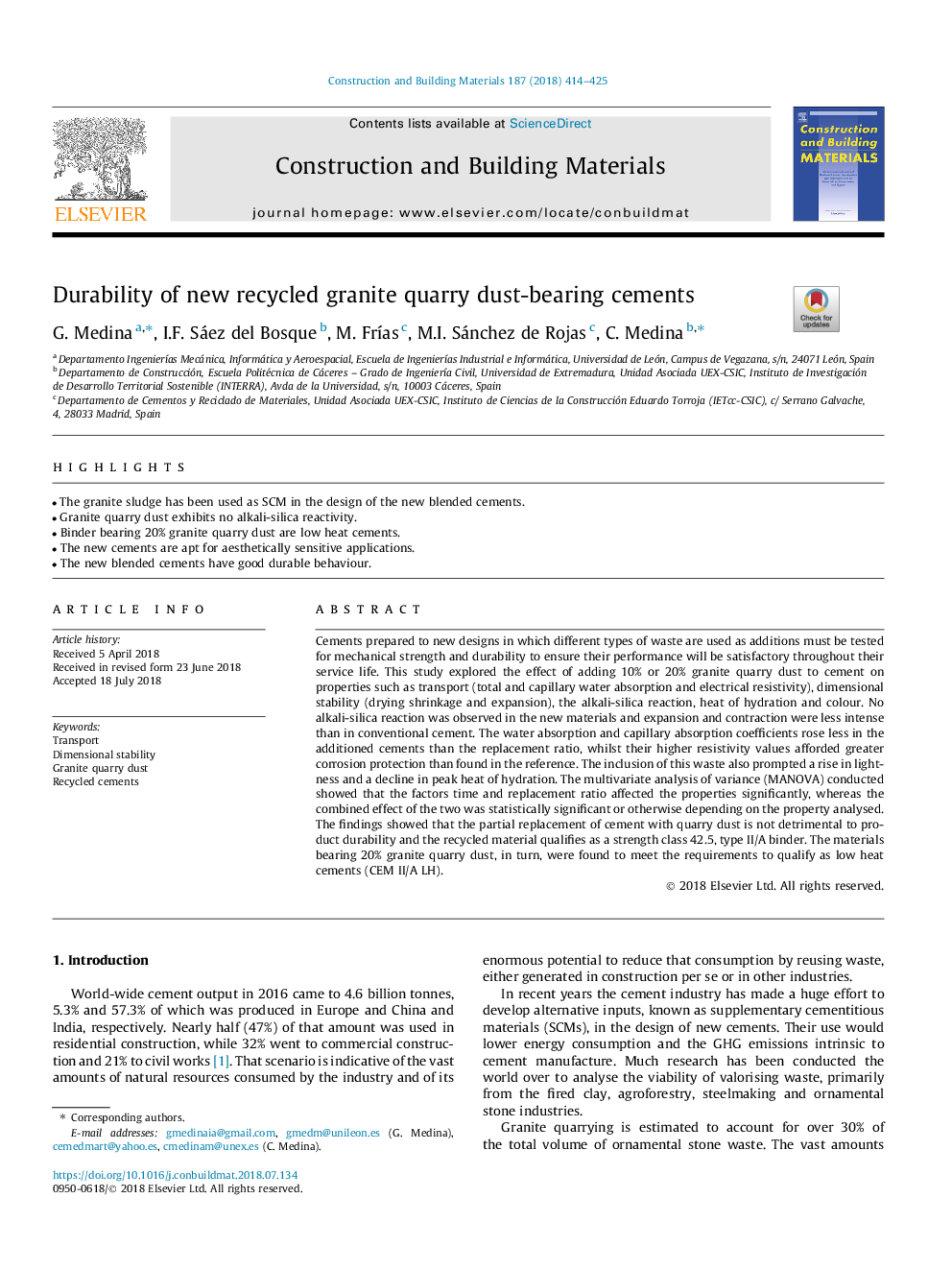| Article ID | Journal | Published Year | Pages | File Type |
|---|---|---|---|---|
| 6711373 | Construction and Building Materials | 2018 | 12 Pages |
Abstract
Cements prepared to new designs in which different types of waste are used as additions must be tested for mechanical strength and durability to ensure their performance will be satisfactory throughout their service life. This study explored the effect of adding 10% or 20% granite quarry dust to cement on properties such as transport (total and capillary water absorption and electrical resistivity), dimensional stability (drying shrinkage and expansion), the alkali-silica reaction, heat of hydration and colour. No alkali-silica reaction was observed in the new materials and expansion and contraction were less intense than in conventional cement. The water absorption and capillary absorption coefficients rose less in the additioned cements than the replacement ratio, whilst their higher resistivity values afforded greater corrosion protection than found in the reference. The inclusion of this waste also prompted a rise in lightness and a decline in peak heat of hydration. The multivariate analysis of variance (MANOVA) conducted showed that the factors time and replacement ratio affected the properties significantly, whereas the combined effect of the two was statistically significant or otherwise depending on the property analysed. The findings showed that the partial replacement of cement with quarry dust is not detrimental to product durability and the recycled material qualifies as a strength class 42.5, type II/A binder. The materials bearing 20% granite quarry dust, in turn, were found to meet the requirements to qualify as low heat cements (CEM II/A LH).
Keywords
Related Topics
Physical Sciences and Engineering
Engineering
Civil and Structural Engineering
Authors
G. Medina, I.F. Sáez del Bosque, M. FrÃas, M.I. Sánchez de Rojas, C. Medina,
